Practice Exam MCQ
Practice Exam MCQ
Corrections
I spent three days on the exam and ended up getting a score of 65/66, which I don’t think accurately reflects my capabilities, so I was pretty surprised. I completely guessed on at least 6 questions, and somehow got those right? I included some of the questions I was unsure on so that I can actually understand what the correct answer is.
Q30
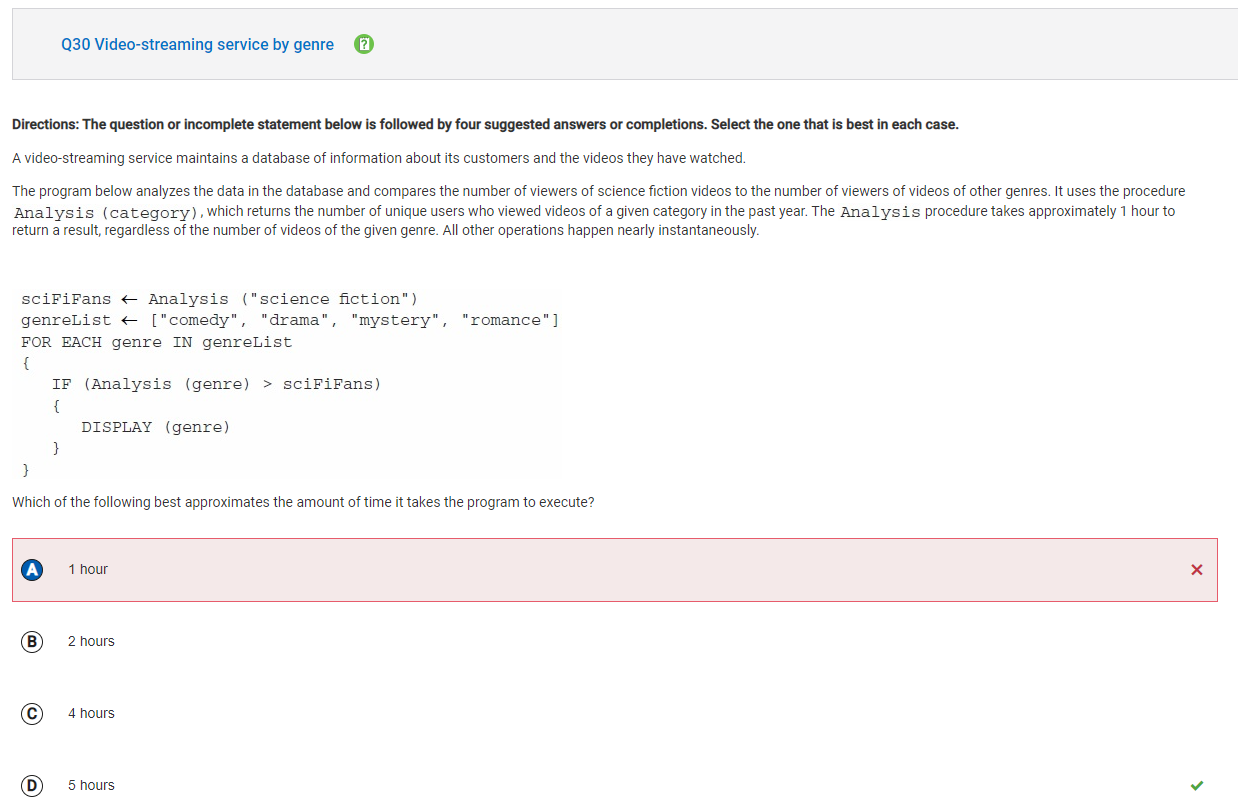
Incorrect Answer: A
Correction: D, This approximation assumes that the analysis procedure is only called once, but it is called several times in the example. 5 hours is the correct answer because
Topics to watch videos on: 3.17, skill 1D
Questions I think I guessed on: 12, 20, 29, 45, 49, 66
Q12
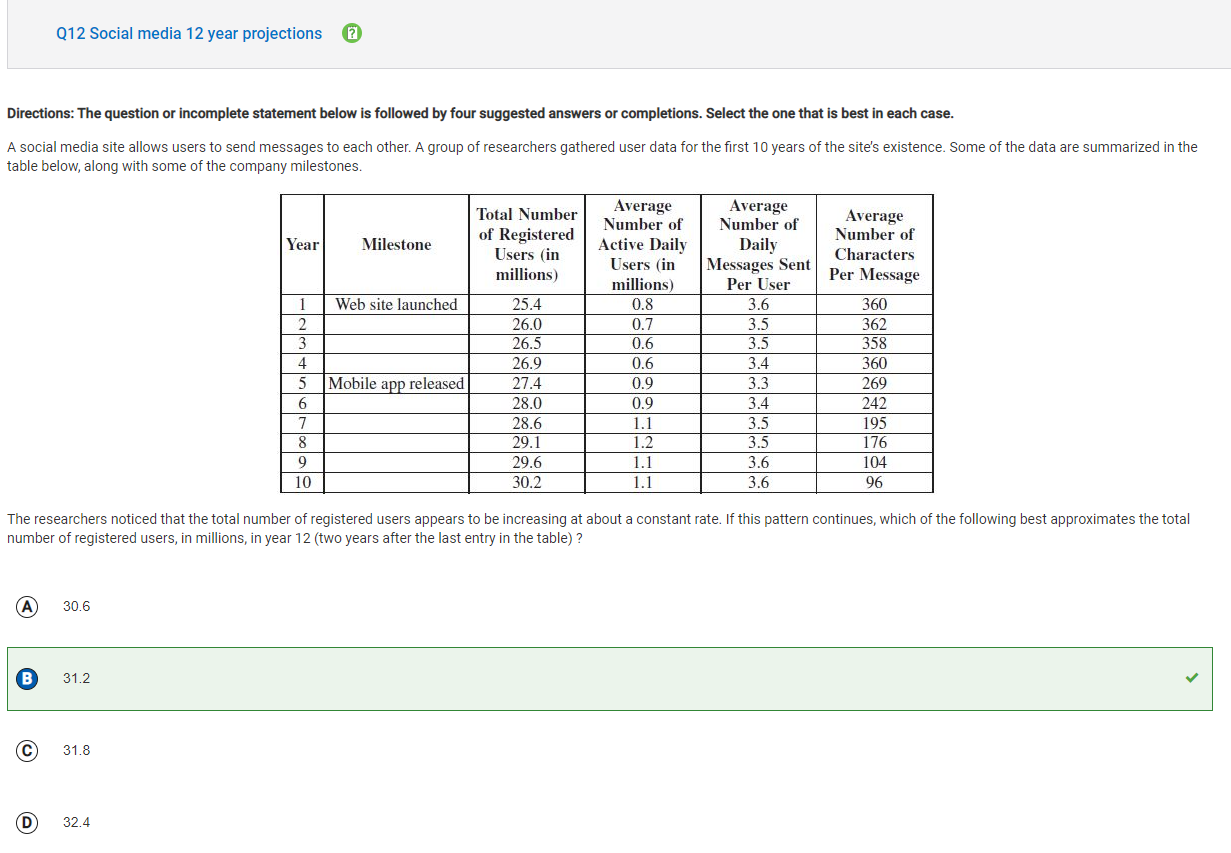 The total number of registered users appears to be increasing by about 0.5 million each year, so in year 12, the number of users can be approximated at 31.2 million (30.2 + 0.5 + 0.5). Simple equation that I should not have guessed on, but should have looked at patterns instead.
The total number of registered users appears to be increasing by about 0.5 million each year, so in year 12, the number of users can be approximated at 31.2 million (30.2 + 0.5 + 0.5). Simple equation that I should not have guessed on, but should have looked at patterns instead.
Q20
 A produces the desired results every time because it first determines the maximum of a and b and then determines the maximum of the resulting value and c. That means it gives the maximum of all values, every single time. I chose A bc it looked the least complicated, which gave me the correct answer, but likely will not work on other problems.
A produces the desired results every time because it first determines the maximum of a and b and then determines the maximum of the resulting value and c. That means it gives the maximum of all values, every single time. I chose A bc it looked the least complicated, which gave me the correct answer, but likely will not work on other problems.
Q29
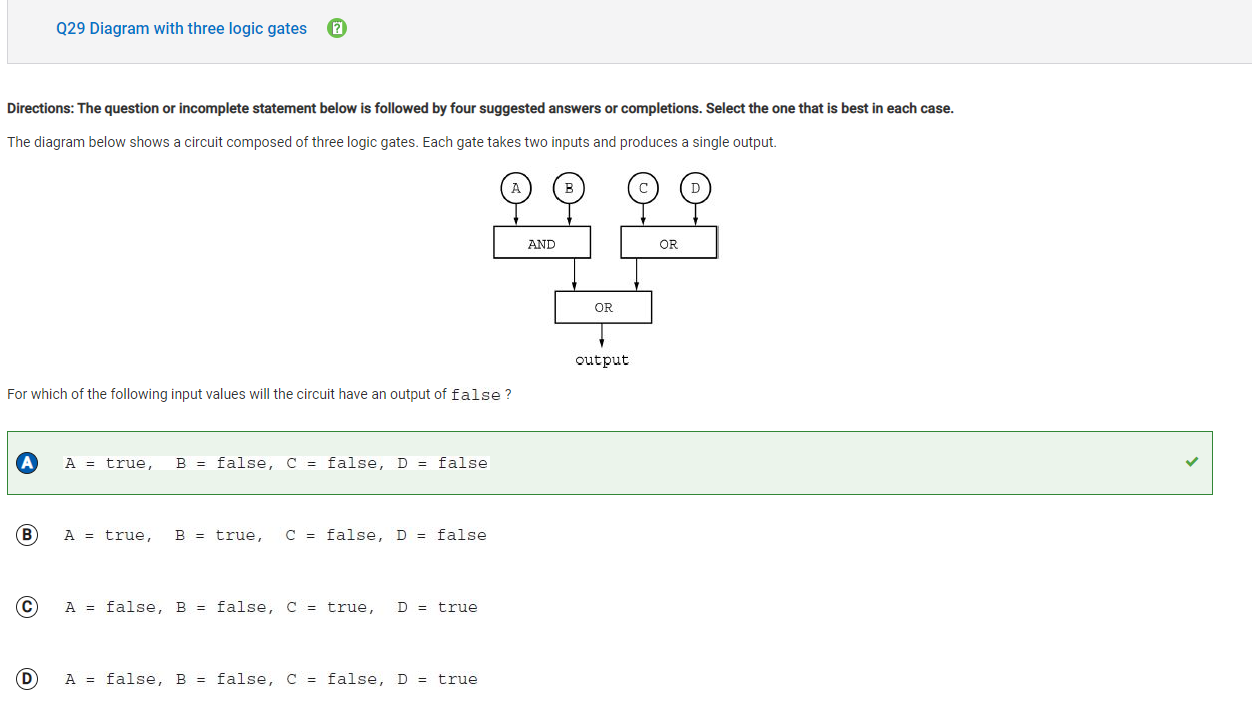 I guessed A again on this one because it was the first option and I did not understand the question. If I paid attention to the question and read it more in-depth, I think I could have gotten the right answer because it is quite simple. The first gate is A AND B, so if one of them is false, the other will be false regardless. For the second gate, it is C or D, so both would need to be false. The only correct answer coud be A.
I guessed A again on this one because it was the first option and I did not understand the question. If I paid attention to the question and read it more in-depth, I think I could have gotten the right answer because it is quite simple. The first gate is A AND B, so if one of them is false, the other will be false regardless. For the second gate, it is C or D, so both would need to be false. The only correct answer coud be A.
Q45
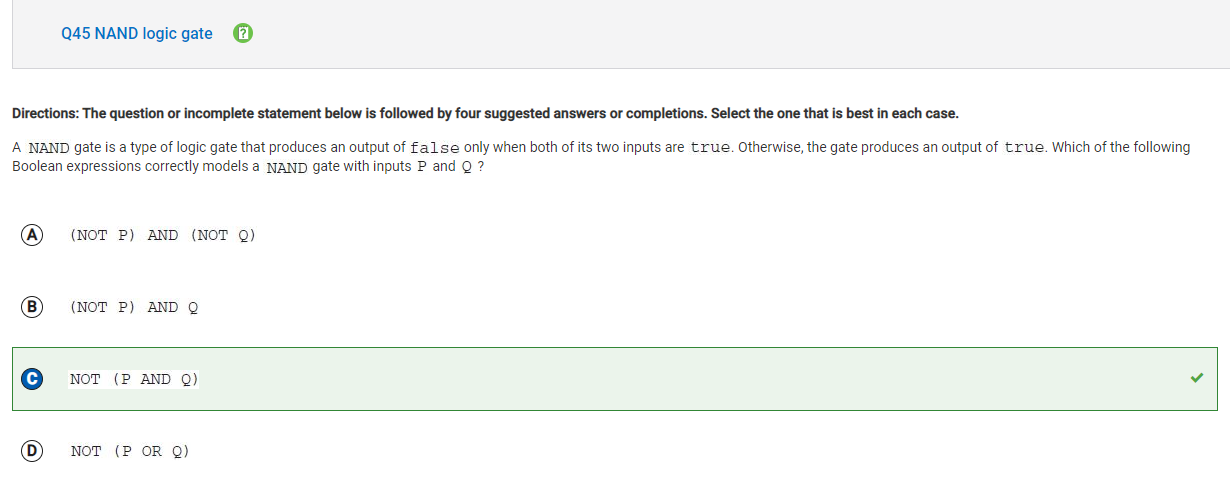 This was another question where I read it, did not understand it, and just clicked C because I know that it tends to be the best guess. I was right in this case, so I guess I had some foundation in that thought. C is correct because P and Q is true only if both P and Q are true, otherwise its all false. This question is difficult to wrap one’s head around, but it makes sense if you realize that “not” reverses what the output is, so it would create the NAND gate by turning the “true” result when both P and Q are true into a “false,” and a “true” when it is otherwise false.
This was another question where I read it, did not understand it, and just clicked C because I know that it tends to be the best guess. I was right in this case, so I guess I had some foundation in that thought. C is correct because P and Q is true only if both P and Q are true, otherwise its all false. This question is difficult to wrap one’s head around, but it makes sense if you realize that “not” reverses what the output is, so it would create the NAND gate by turning the “true” result when both P and Q are true into a “false,” and a “true” when it is otherwise false.
Q49
 I read thi question, gave up, and chose C for the same reason I chose C in question 45. I read the explanations and still cannot really wrap my head around it. The loops needs to iterate once for each multiple of 5 from start to end, but the number of multiples is given by the correct expression listed in option C. It would evaluate to 4, which is what the question wants.
I read thi question, gave up, and chose C for the same reason I chose C in question 45. I read the explanations and still cannot really wrap my head around it. The loops needs to iterate once for each multiple of 5 from start to end, but the number of multiples is given by the correct expression listed in option C. It would evaluate to 4, which is what the question wants.
Q66
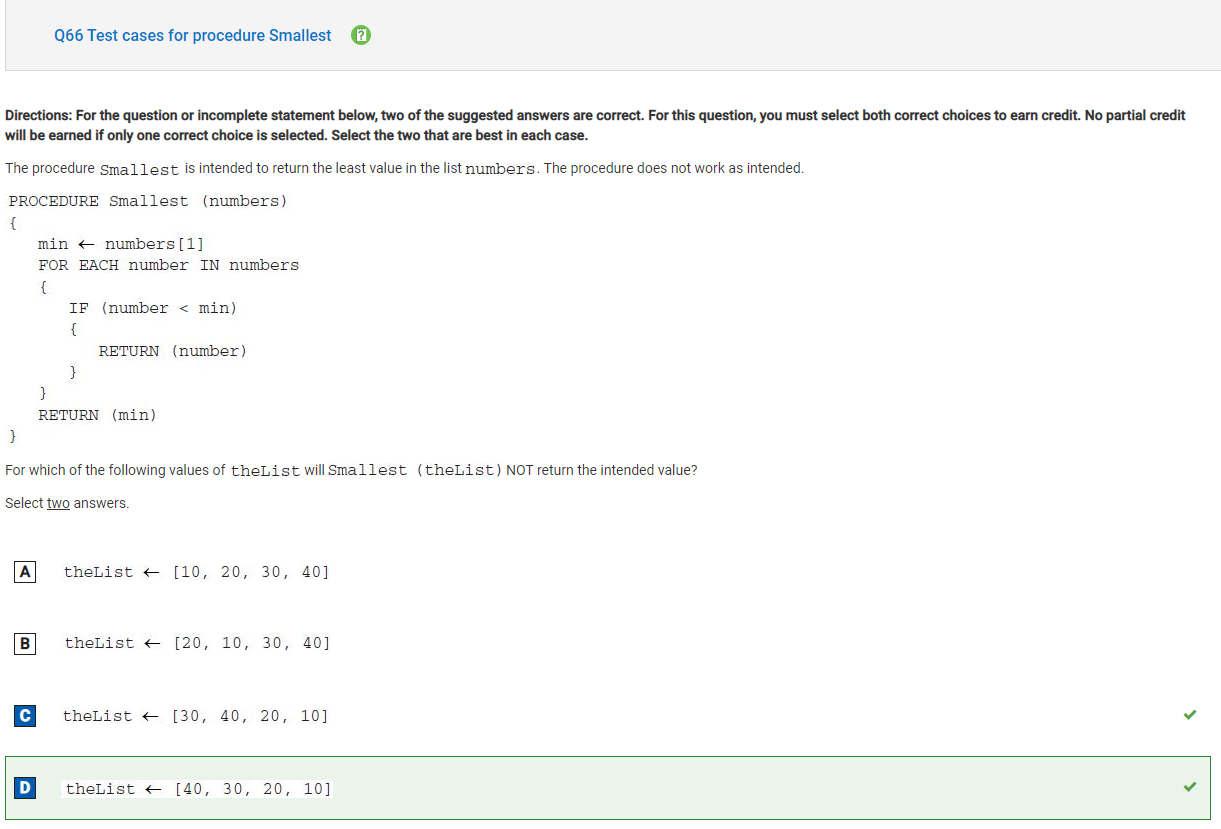 I chose C and D because I thought it would be the options that ended with the smallest values, to be safe. Those ended up being the correct choices, but because the procedure will return the first value it finds that is smaller than the first value. The procedures in C and D return 20 and 30 when they should return 10, which is why they are correct.
I chose C and D because I thought it would be the options that ended with the smallest values, to be safe. Those ended up being the correct choices, but because the procedure will return the first value it finds that is smaller than the first value. The procedures in C and D return 20 and 30 when they should return 10, which is why they are correct.